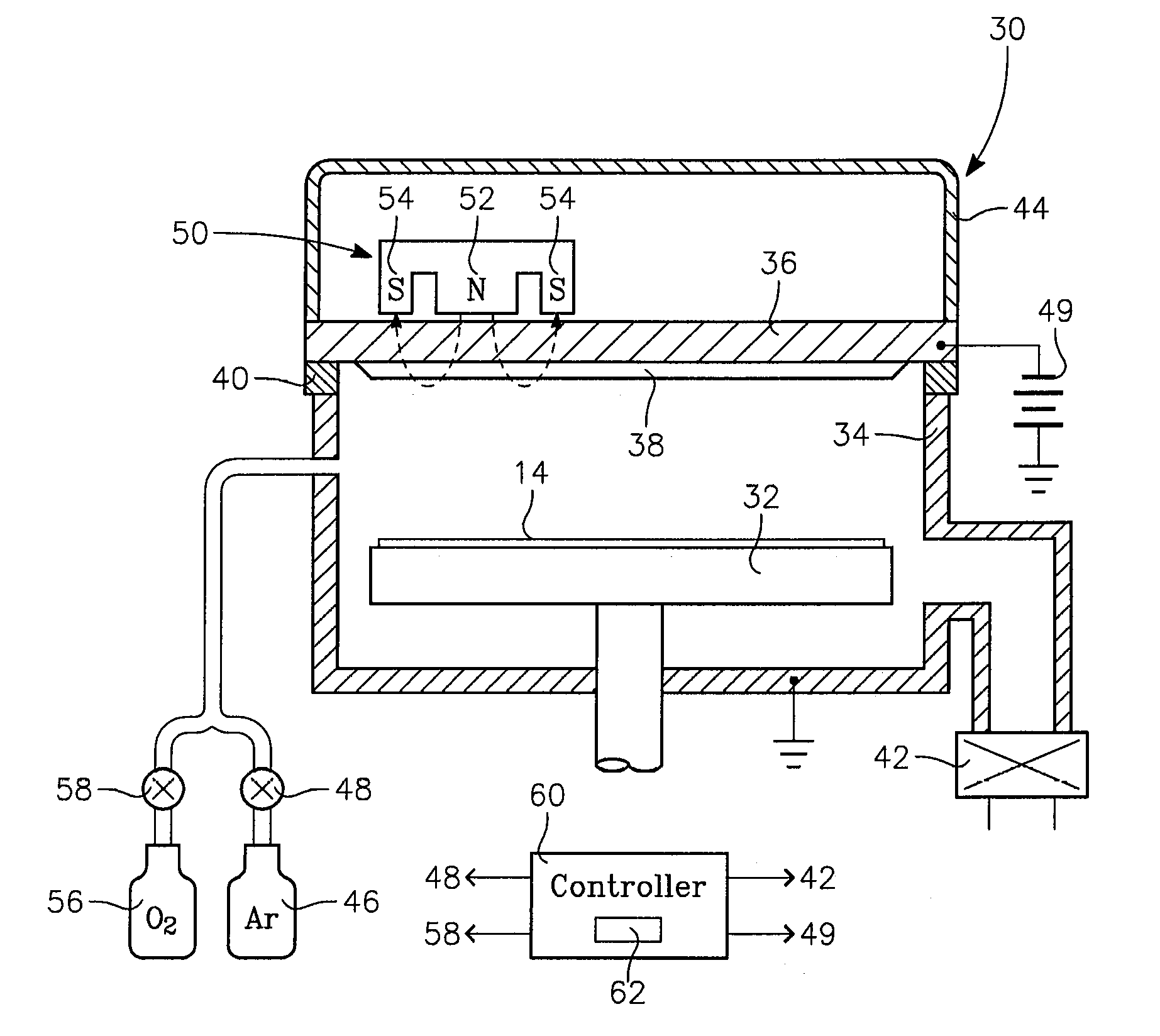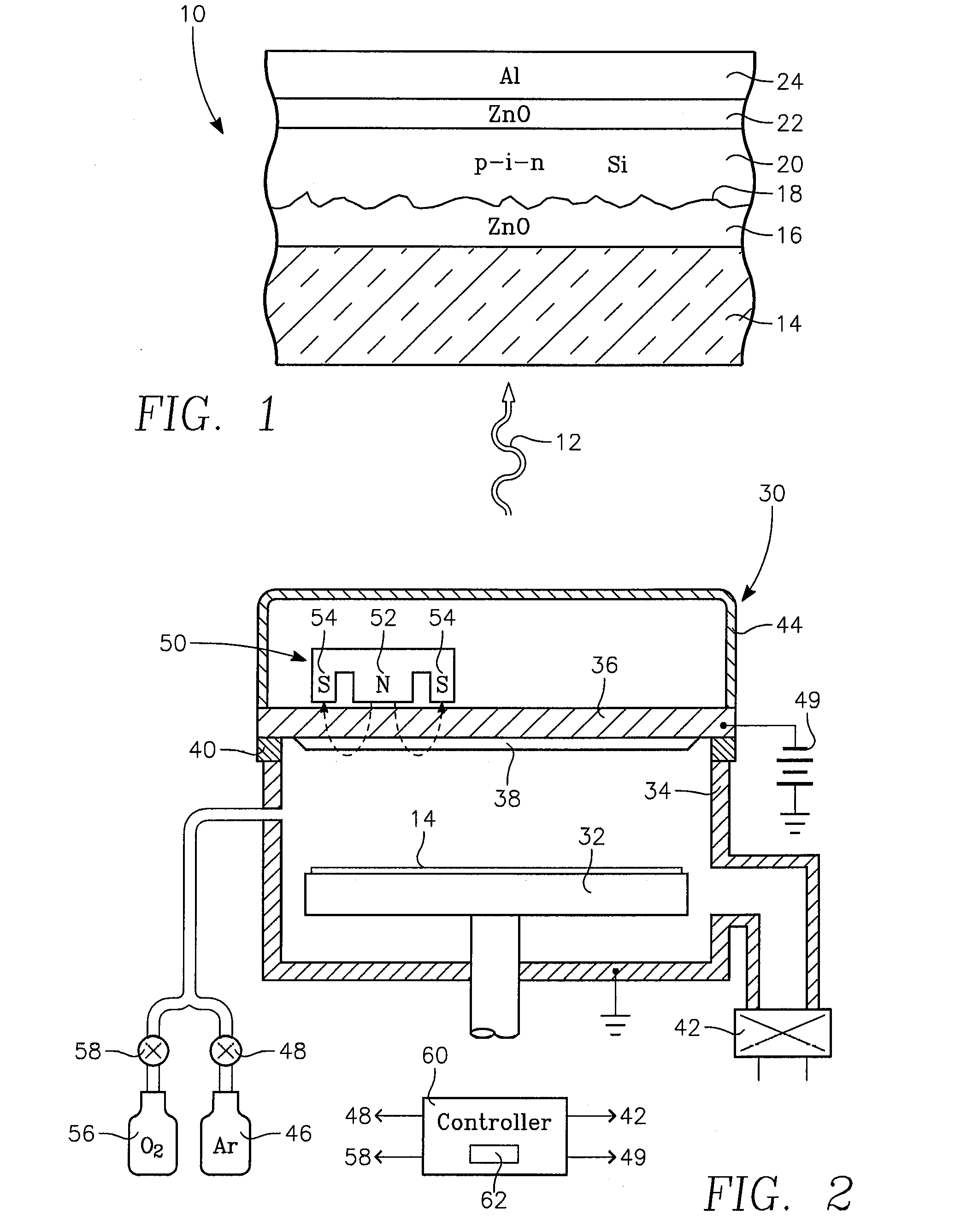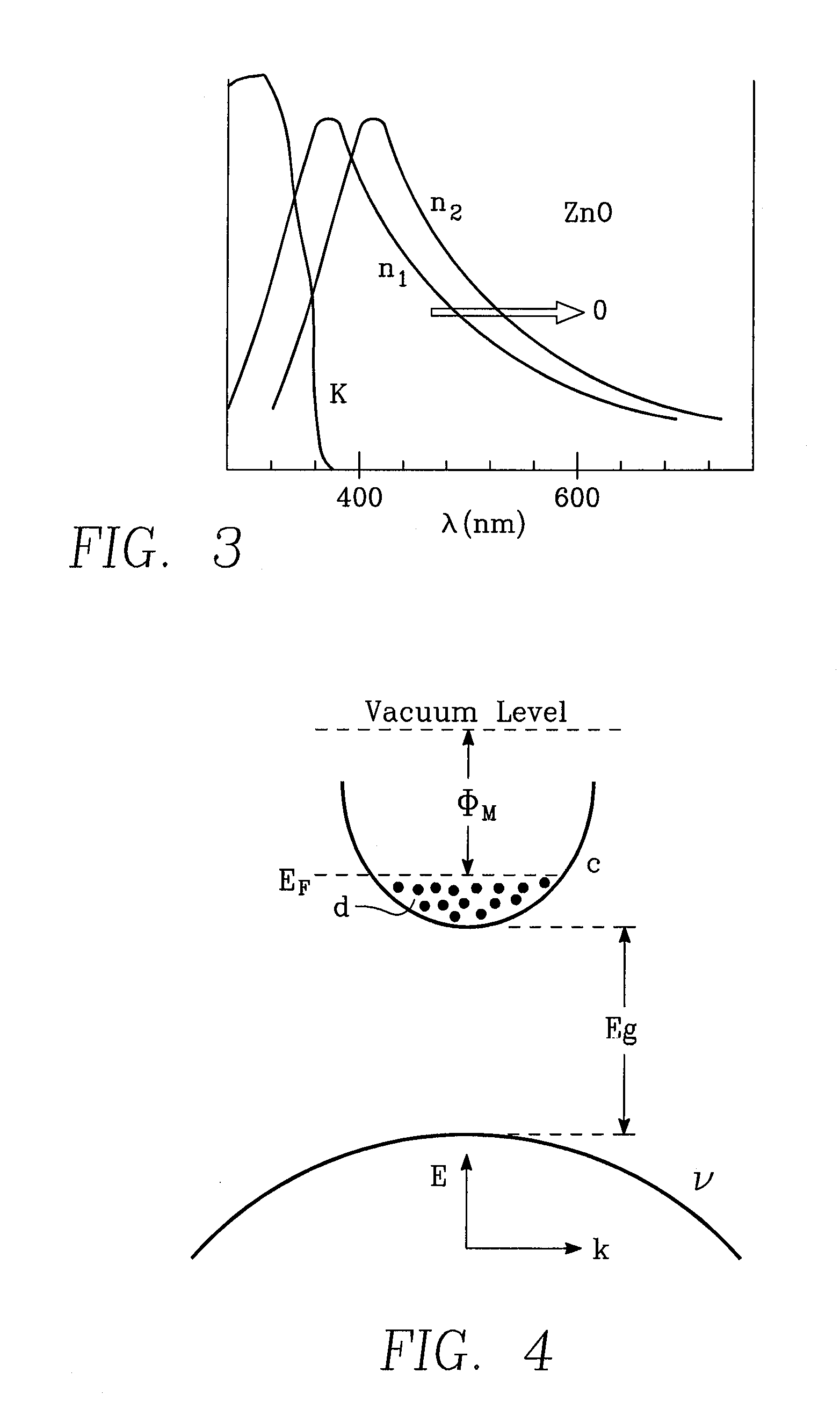Transparent zinc oxide electrode having a graded oxygen content
a zinc oxide and oxygen content technology, applied in the field of photovoltaic semiconductor devices, can solve the problems of increasing the cost of crystalline silicon thick plates, still generating carbon dioxide, and becoming very expensive,
- Summary
- Abstract
- Description
- Claims
- Application Information
AI Technical Summary
Benefits of technology
Problems solved by technology
Method used
Image
Examples
Embodiment Construction
[0017]A multi-step process for reactive sputtering of zinc oxide has been demonstrated to provide a superior transparent conductive oxide (TCO) electrode for use in solar cells and other photoelectric devices. One embodiment of a thin film solar (TFS) cell 10 is illustrated in the cross-sectional view of FIG. 1. This solar cell 10 is intended for illumination by radiation 12 from an external side of a superstrate 14. On the internal side of the superstrate 14 a thin film structure is fabricated. The solar cell 10 has been demonstrated for the superstrate 14 composed of a borosilicate glass, such as Corrning 1737 glass, similarly to a flat panel display. Such a borosilicate glass has an index of refraction of about n=1.5 in comparison to n=1 for air. On the superstrate 14 is sputter deposited a transparent conductive oxide (TCO) electrode 16 of a metal oxide such as ITO, zinc oxide preferably aluminum doped. Doped zinc oxide has an index of refraction n in the range of about 2.0. A t...
PUM
 Login to View More
Login to View More Abstract
Description
Claims
Application Information
 Login to View More
Login to View More - R&D
- Intellectual Property
- Life Sciences
- Materials
- Tech Scout
- Unparalleled Data Quality
- Higher Quality Content
- 60% Fewer Hallucinations
Browse by: Latest US Patents, China's latest patents, Technical Efficacy Thesaurus, Application Domain, Technology Topic, Popular Technical Reports.
© 2025 PatSnap. All rights reserved.Legal|Privacy policy|Modern Slavery Act Transparency Statement|Sitemap|About US| Contact US: help@patsnap.com



